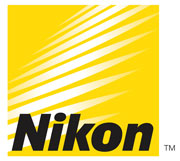 |
→ January 2006 Contents → Feature
|

|
|
|
One2One Introduction
|
 |
|
As fame and celebrity have reached truly global proportions, celebrity photography has become ubiquitous in the media and popular culture. The covers and pages of magazines are dominated by images of the famous, the beautiful, and the glamorous. But, despite the excess, there are still those images that rise above the myriad of faces, images that are truly arresting and have become iconic. These images define the public's perception of the subject, encapsulate the persona, and are a decisive moment in the constant flux of pop culture. Images such as these are often the result of a rare and intimate connection between the photographer and the artist, working together behind and in front of the camera to create an icon. There exists a level of trust and kinship that sparks a creative collaboration, the results of which are images that provide extraordinary portraits. Portraiture is a uniquely challenging photographic genre with relation to innovation and invention. Today this is further hindered by external limits put upon the creative process. The economic pressure of magazine cover sales, as well as the demands of box office numbers, has resulted in intense media plays. Access is tightly limited and controlled. Control by the subjects' publicists, in tandem with the risk-adverse nature of today's major magazine publishers, does not invite free expression. The lack of creative conviction being shown by so many publishers, especially in the U.S., is absolutely deflating to anyone who views magazines as an immediate platform and outlet for contemporary creative photography. Why is it that photography has been so tamed within mainstream magazines? When was it that risk, by which I am really describing trust—trust in the creative power of a photographer—became contrary to so many magazines in their understanding of what makes a magazine successful? Time and again it is proven that the portrait sessions that are not bound or hindered in any way creatively return the most intimate and remarkable images. In turn, these images prove to make the most financially successful issues. Why hire a photographer because you recognize in them extraordinary talent only to then rein in and restrict that talent? One2One is a testament to what happens when a photographer is granted creative freedom. It is also an illustration of trust—trust shared among all parties who must come together to create the image of an icon. Sometimes this trust is the result of years of working together, and at other times it is an instant connection. Trust most significantly between some extraordinarily talented photographers and their extraordinary subjects.
© William Hannigan
|
|
Back to January 2006 Contents
|
|